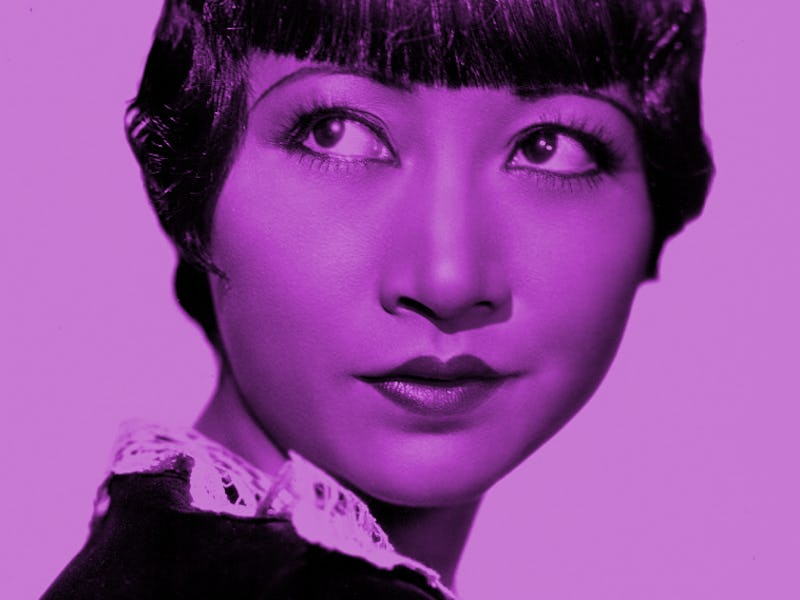Anna May Wong: Google honors Hollywood's pioneering star
It was almost the biggest role of her career. Censorship kept her from achieving it.

In a just world, Anna May Wong would be as much a Hollywood icon as Grace Kelly, Audrey Hepburn, and Marilyn Monroe. Unfortunately, crusty 20th century racism and censorship kept one of Hollywood's best stars from shining as brightly as she deserved.
Today, tech giant Google dedicated its January 22 "Google Doodle" to Wong, the first Chinese-American actress who gained worldwide acclaim in both the silent and sound era of movies. January 22 commemorates the release of The Toll of the Sea, a 1922 silent film (among the first to be shot and screened in Technicolor) that featured Wong in her first lead role. The movie tells the love story of an American sailor, Allen Carver (Kenneth Harlan) who is found washed ashore in China by a young woman, Lotus Flower (Wong).
Artist Sophie Diao, who created the Google Doodle of Wong, said: "I wish I had known about her when I was a kid. I was always looking for Chinese American role models in movies and TV shows. Asian-American actors are underrepresented even now." She commended Wong for being "active right at the beginning of film history."
Google uses the 97th anniversary of The Toll of the Sea to celebrate Wong, a revolutionary woman who transcended racial barriers only to be limited by them. As an actress, Wong is best remembered for her roles in both Hollywood and European movies, including Daughter of the Dragon (1931), Daughter of Shanghai (1937), and Shanghai Express (1932), where she appeared with her close friend Marlene Dietrich. In 1942, Wong starred in anti-Japanese propaganda films like Bombs Over Burma and Lady From Chungking, based on her outrage toward Japan's invasion of Manchuria during World War II.
In 1951, Wong made history starring in the TV show The Gallery of Madame Liu-Tsong, about an art dealer who moonlights as a detective. Although it lasted for only ten episodes, the show made history as the first American television series to star a female Asian lead. Today, no episodes of Madam Liu-Tsong survive; as per defunct network DuMont's policies, archival material were dumped into New York's Hudson River than stored away for preservation. Some real geniuses, they were.
Movie poster for 'Shanghai Express,' starring Marlene Dietrich and Anna May Wong.
It is difficult to illustrate just how big of a star Wong was in her lifetime. She was among the first true celebrities of the 20th century. In addition to acting, she was celebrated as a fashion icon, whose film "exotic" roles of sultry "dragon ladies" invented a style that led to the Mayfair Mannequin Society of New York voting her "The World's Best Dressed Woman" in 1934. Like gossip blogs today, the press speculated over her personal life; her close friendships with many women, including Dietritch and Cecil Cunningham, led to rumors of lesbianism. When a reporter asked her in Hong Kong why she never married, she told them, "I am wedded to my art."
The Doodle was created by Doodler Sophie Diao.
But Wong's stardom had limits. Although Wong began her career in the 1920s, it was in 1934 when the Motion Picture Production Code, also known as the "Hays Code," began to regulate the "moral content" of Hollywood films. Among the things the Hays Code forbade was miscegenation, which alone stalled Wong's career. As a Chinese actress, Wong could not star in movies where the female lead falls in love with non-Chinese men. Even if the male characters were Chinese, the actors playing them were not. The only solution would be to cast Asian men in leading roles, but Hollywood is famously resistant to that idea, even today.
Things came to a head for Wong in 1935, when Wong was passed over for the role of "O-lan," the Chinese lead in The Good Earth. Based on a 1931 novel, the role was Wong's dream role, and she wasn't alone. Several L.A. newspapers touted Wong as the best choice for the part. But MGM, who were intent on casting Hungarian-American Paul Muni as the male lead, didn't want to risk problems with the Hays Code. (The studio tried to offer Wong the role of a villainous courtesan, but Wong refused.) MGM ultimately cast German-British actress Luise Rainer as the Chinese O-lan, which earned her the 1937 Oscar for Best Actress. In the 2000 book Screen Style by Sarah Berry, Berry writes that MGM's refusal to cast Wong as O-lan was "one of the most notorious cases of casting discrimination in the 1930s."
Anna May Wong.
Wong still had a career after The Good Earth, but the events inspired Wong to temporarily leave Hollywood and reconnect with her Chinese roots. She toured her father's hometown and immersed herself in Chinese theater, and chronicled her experiences for the American press including The Los Angeles Times. She later remarked upon her return to the states: “I am convinced that I could never play in the Chinese theater. I have no feeling for it. It’s a pretty sad situation to be rejected by the Chinese because I’m too American and by American producers because they prefer other races to act Chinese parts."
Wong died of a heart attack in 1961, at her home in Santa Monica, at the age of 56. Today, there is a distinct class of English-speaking Asian film stars seen in the likes of Constance Wu (Hustlers), Awkwafina (The Farewell), John Cho (Star Trek), Henry Golding (Crazy Rich Asians), and Simu Liu (Shang-Chi and the Legend of the Ten Rings).
Their success is theirs to own, but they are part of a long history that the likes of Anna May Wong started over 90 years ago.